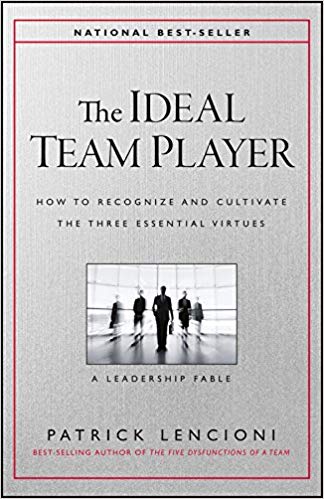
A leader is best when people barely know he exists, when his work is done, his aim fulfilled, they will say: we did it ourselves. – Lao Tzu
I read the story of a young man who applied for a job as a farmhand. When asked for his qualifications, he told the farmer about his previous experience then said, “I can sleep when the wind blows.” This puzzled the farmer, but he took a liking to the young man and hired him.
A few months later, the farmer was awakened in the night by a violent storm. He ran outside to make sure that everything was secured. He found the barn doors tightly shut and the shutters closed. The storage shed and machinery was already properly taken care of. That was when the farmer realized the significance of the statement, “I can sleep when the wind blows.”
Just as the farmer found the type of worker he needed in the young farmhand, so too, do employers need those dependable people within their organizations. They need those who know what to do when the winds blow and the storms rage.
In my space here last week, I wrote about leaders not throwing their people under the bus. This week, we flip the script. The measure of your value to your organization is in how you treat those in positions ahead of you.
Thriving and successful organizations are so because those in leadership and all within it place premium value on relationships, communication, trust, clearly defined values and goals, and collaboration to name a few.
But when people within the organization are throwing the leader under the bus then the health of the organization is at stake. And for the sake of context here, I am not talking about incompetent bosses, bullies, and jerks which is a topic for another day. I am more directly addressing the issue of an otherwise good leader performing well.
So what are some of the more common ways leaders are thrown under the bus and what are the consequences. Let’s explore these four ways.
You throw your leader under the bus when you elevate your agenda ahead of the organizations’ agenda
When you put your personal agenda ahead of the organization’s agenda, then you are undermining those in leadership. If you are placing what’s best for you ahead of what’s best for everyone then you are only serving your own interests. The way you get ahead is not by cutting the legs out from underneath those in leadership but by elevating them. Click To Tweet When you help your leader succeed you will succeed.
Leadership Truth: No matter what our circumstances, our greatest limitation isn’t the leader above us-it’s the spirit within us. – John Maxwell
You throw your leader under the bus with whisper campaigns
It usually sounds something like, “If I were the one in charge…”, or “She’s in way over her head” and of course this one, “He’s always playing favorites”. And from there it takes on a life of it’s on. Instead of adding value to your leader by “leading up”, many find it easier to just throw them under the bus. But when you see that your success is tied to your leader’s success you will begin to see things in a new light. Maybe instead of water cooler whispers, you can try having their back.
Leadership Truth: If you want to get ahead, leading up is much better than kissing up. – Dan Rieland
You throw your leader under the bus when you withhold your best and don’t offer solutions
When you withhold your best from your leader and don’t offer solutions you are making the work of your leader harder. You are denying your organization the leverage they need to move forward. Solutions withheld is progress denied. By not giving your best, offering your best, and being your best, you are more of an obstacle to progress than you are a help. Click To Tweet Those in leadership need you at the top of your game, not holding back. They need to see that you are a strong team player.
Leadership Truth: The team with the best players wins. – Jack Welch
You throw your leader under the bus when you are unable to adapt
Flexibility is essential to a thriving workplace culture. So long as you have a “this is the way we’ve always done it,” attitude and are unable to make adjustments, then you are throwing your leaders under the bus. When the wind blows and the storms come, you should be able to demonstrate to your leadership that you can sleep in the wind. Let your leadership see that you can adjust your sails and not only adapt to change but you can lead it.
Leadership Truth: Growth is painful. Change is painful. But, nothing is as painful as staying stuck where you do not belong. – N.R. Narrayana
I know this to be true – no one likes being thrown under the bus. We need more people on it and no one thrown under it. It’s time to find a better way and lead by example.
©2019 Doug Dickerson
Additional resources from my website:
Four Things All Humble Leaders Do









